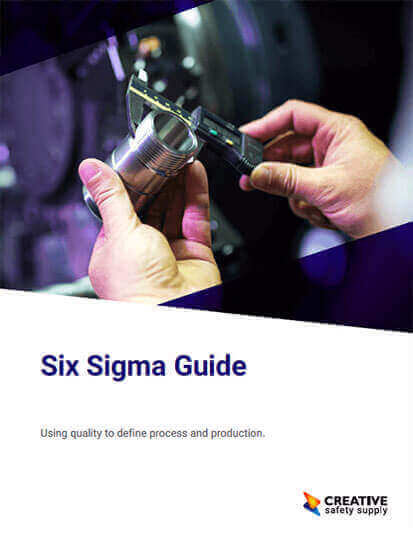
Yes, Six Sigma is a Lean manufacturing method that focuses specifically on quality control and quality management. Six Sigma uses a number of foundational Lean methods to establish its principles. In fact, Six Sigma’s whole purpose is to combat defects, which is one of the 8 Wastes of Lean: Defects, Overproduction, Waiting, Non-utilized talent, Transportation, Inventory, Motion, Excessive processing.
Defects waste is particularly destructive because it robs companies of two things: time and resources. It requires more resources to rework/reproduce defective products, and it costs operators more of their precious time to perform the rework.
Six Sigma’s practices address defects by improving manufacturing processes, and they improve processes by using one of two methods: DMAIC, and DFSS. Both of these methods were inspired by Lean pioneer W. Edward Demings’ Plan-Do-Study-Act Cycle.
DMAIC
This methodology is comprised of five phases:
Define the system, the expectations of customer, project goals, etc. specifically. Well-defined goals and expectations mean product specifications are more clear and consistent.
Measure key aspects of the current process and collect relevant data; calculate the “as-s” Process Capability.
Analyze data to confirm cause-and-effect relationships. Determine what causal relationships are; take all actions possible to ensure all conditions and special circumstances have been considered and accounted for. Seek out root cause of the defect under investigation.
Improve current process using data analysis as basis for improvement. Techniques like design of experiments, poka yoke, and mistake proofing. Experiment with pilot runs to establish Process Capability.
Control the processes to ensure that any aberrations are corrected before they turn into defects.
DMADV or DFSS
The DMADV project methodology, known as DFSS (Design for Six Sigma), features five phases:
Define design goals that align with customer needs and business strategy
Measure and identify characteristics that are critical to quality (CTQ). Measure product capabilities, production process capability, and measure risks
Analyze to develop and design alternatives
Design an improved alternative, best suited per analysis in the previous step
Verify the design, set up pilot runs, implement the production process and hand it over to the process owner(s).
Lean manufacturing mines and utilizes other methods and tools and uses them to its benefit; Six Sigma is no different. It should be noted that in order to execute the individual phases of DAMIC or DMADV, workers should utilize commonly-known QA tools.
Similar Questions
- Can Six Sigma be used in service industries?
- What is Design for Six Sigma?
- How is Six Sigma different from Kaizen?
- What is Six Sigma?
- How can Six Sigma help a company?
- How can Six Sigma be used in project management?
- What are Six Sigma principles?
- What are the benefits of Six Sigma?
- Who can do Six Sigma?

